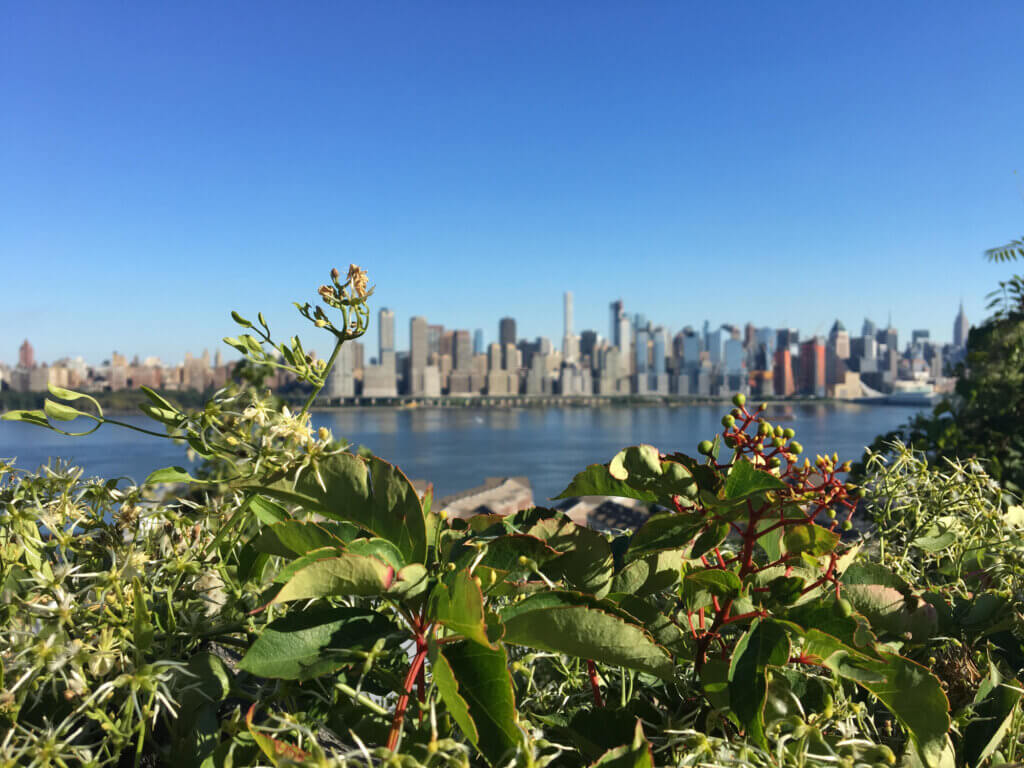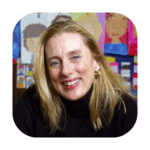Jaimie Cloud, founder and president of The Cloud Institute for Sustainability Education, has dedicated her career to empowering students and educators with the knowledge, skills, and mindsets needed to create a sustainable future. In this Q&A, she reflects on how her early experiences in global education shaped her journey, the evolution of Education for Sustainability, and what gives her hope for the next generation.

Can you introduce yourself, including your name, pronouns, organization(s), role, and any affinity group identifiers you’d like to share?
J: My name is Jaimie Cloud, and I use she/her pronouns. I am the founder and president of The Cloud Institute for Sustainability Education. Another important affinity I have is with the farm where I live with my family in New York State.
What inspired you to commit to this work three decades ago? Was there a defining moment that set you on this path?
J: At age eleven, I participated in the first global education experiment led by universities and Quakers, designed to expand U.S. awareness of world affairs during the Vietnam War. This interdisciplinary, learner-centered experience shaped my worldview, teaching me about interdependence, change, and our responsibility for the future of life on the planet. I grew up to become a global educator because I believed it was the most forward-thinking approach to education in the 21st century.
A defining moment came in 1987 when the UN introduced the concept of “sustainable development” in the Our Common Future report. I had been tracking the state of the planet since middle school, and despite bits of true progress, I saw environmental and social decline everywhere. I realized I had been tracking unsustainability—but I hadn’t had a term for it. Seeing the word “sustainability” sparked my commitment to educating for sustainability.
The 1992 Rio Summit’s Agenda 21, Chapter 36, reinforced my belief that education was key to a sustainable future. Without the internet at the time, I studied emerging frameworks, which culminated in the founding of the Sustainability Education Center in 1995. By 2001, it became the Cloud Institute for Sustainability Education. Over time, I shifted from individual lessons to shaping whole-school and district-wide sustainability approaches, fostering collaboration between schools and their communities. Today, my work remains future-focused, interdisciplinary, and dedicated to empowering communities to co-create solutions that ensure education shapes a more resilient world.
How would you briefly describe Education for Sustainability (EfS)?
J: EfS is the knowledge, skills, dispositions, and enduring understandings that help us build the will and capability to thrive over time.
What have been the most significant shifts in how EfS is understood and implemented since you first started?
J: In the early years, no one really understood what we were talking about. When I first heard the term, I thought it would take three to five years to gain traction—but for the first fifteen to twenty years, the main questions were, “What is it?” and “Why should we do it?” The focus was on defining the concept and its importance. Eventually, the conversation shifted to “How do we do it?”
Even then, I realized that while people grasped why sustainability mattered, they didn’t fully understand what it entailed. The biggest shift has been moving from no awareness or demand to curiosity, and ultimately, to a strong desire for implementation.
How has your perspective on EfS evolved? Are there any ideas you once held firmly that have since changed?
J: Initially, I believed that if people simply understood sustainability, they would naturally adopt it. However, I quickly realized that schools are not designed to change, not designed to make change, and not even designed for learning. Many still resemble rigid structures, siloed subjects, and outdated systems that hinder true transformation. We need schools that foster critical thinking, systems thinking, metacognition, creative thinking, futures thinking, and adaptability.
At first, I focused on the importance of transformative and experiential learning. While that belief held true, I discovered a deeper challenge—our cognitive frameworks were outdated. This realization pushed me to explore brain science, particularly how mindsets form and shift, and how thinking drives behavior. Change thinking—change the world.
Over time, I began studying neuroplasticity and the necessity of cultivating it in education. If students don’t develop the ability to reflect on their actions, read feedback, and iterate, they won’t be able to take responsibility for the difference they make. Today, with sustainability becoming a priority for cities and organizations, EfS is more relevant than ever. My journey has taken me from ecologists to economists, from psychologists to neuroscientists, and from neuroscientists to farmers—all to better understand how we can truly educate for a sustainable future.
Can you share some initiatives or programs that have significantly advanced EfS for students and educators?
J: Early in my work on EfS, I developed the Cloud Institute’s EfS Framework and EfS Standards and Performance Indicators. Schools needed a structured way to engage with EfS, and this framework has become a widely used tool.
Later, I gathered forty-two experts worldwide to define the essential elements of EfS, creating the Benchmarks for Individual and Social Learning—a global consensus document ensuring EfS had a structured core. Beyond these foundational efforts, I am leading collaborations to scale EfS nationally and globally. The National Park Service is integrating sustainability into all U.S. national park education programs. The International Baccalaureate is incorporating EfS into its framework. I am also the lead author of Oxford International Press’ curriculum series, offering thirty-six project-based learning experiences per year for nine years.
With these efforts, EfS is expanding rapidly, proving its value in improving student learning, school culture, and sustainability outcomes.
Who have been some of the key collaborators or mentors in your journey—locally, nationally, or internationally?
J: Buckminster Fuller’s Critical Path and my middle and high school teachers first shaped my thinking about sustainability. Over time, I collaborated with experts in both sustainability and education, including Giselle Martin-Kniep, Heidi Hayes Jacobs, Marie Alcock, Grant Wiggins, Jay McTighe, and Bena Kallick. More recently, I’ve worked with Ghadaa Maalouf, Jody Ellenby, and others to advance EfS globally. Thought leaders like David Orr, Paul Hawken, Bill McDonough, Janine Benyus, and youth leaders like Xiye Bastida and Terrius Harris continue to inspire and inform my work.
With climate change accelerating, how do you see the role of education evolving to meet this moment?
J: Education’s evolving role centers on whole schools and their communities working together. Schools and communities should learn and collaborate as one. Because almost all young people are in school during their most formative years, they become powerful ambassadors and educators within their communities. They influence their families, work with community-based organizations, and engage with local governments, fostering meaningful change beyond the classroom.
What gives you the most hope for the future of EfS?
J: My vision is to accelerate and scale this work much more quickly because it works—especially when kids engage with it. The pace, however, is too slow. If we want to meaningfully contribute to the course correction toward sustainability, we must reach many more schools, much faster.
What gives me hope is young people—and the young at heart. Age doesn’t matter, but curiosity, awe, wonder, and the willingness to make a course correction do. We need the will and motivation to recognize that this is Game On, not Game Over. As soon as young people realize this, they’re ready to go.

